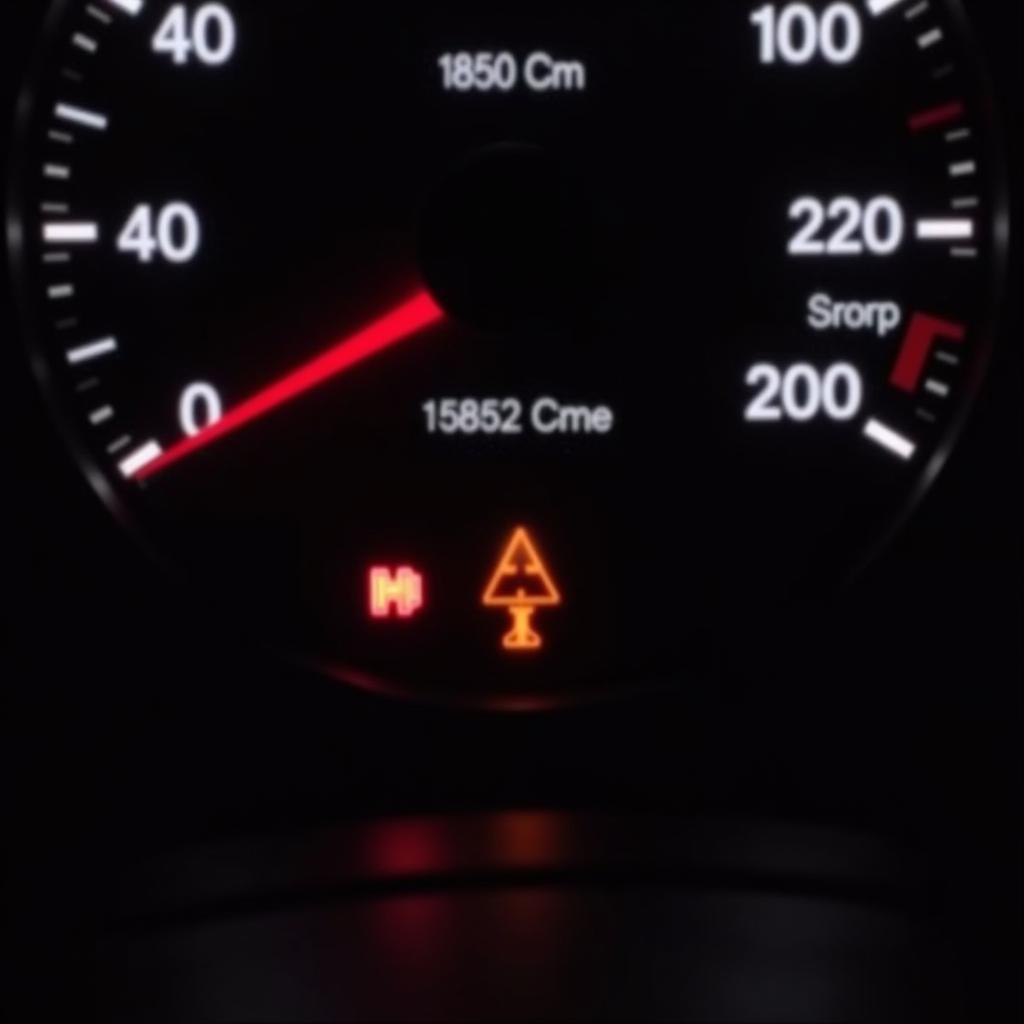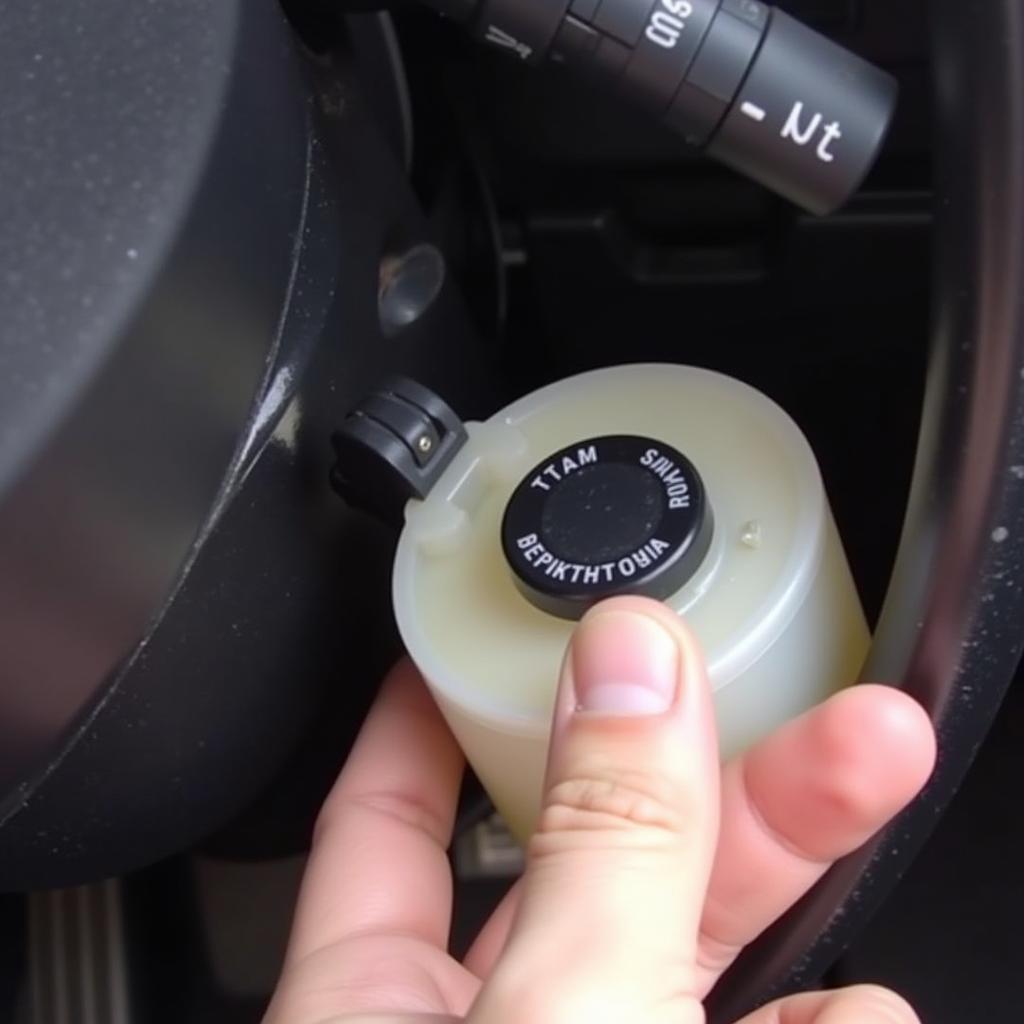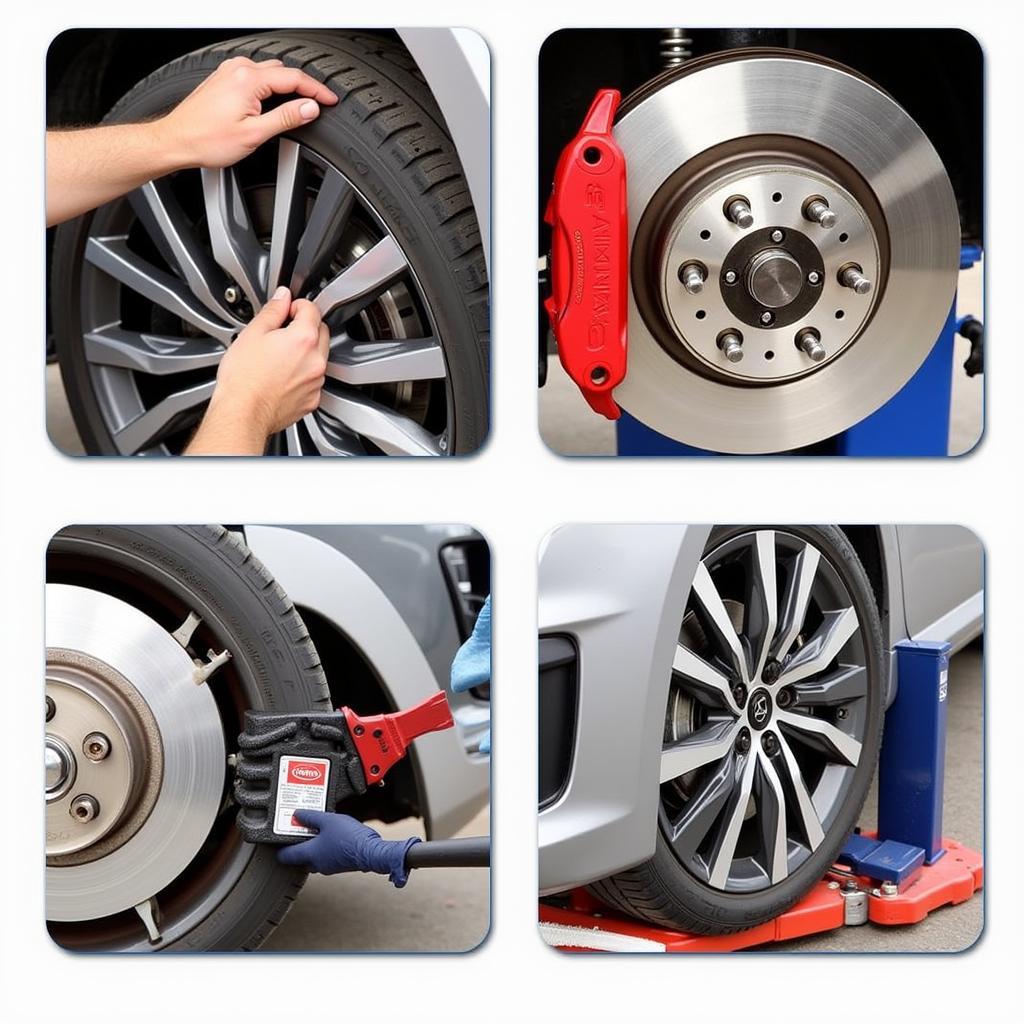The Kia Optima brake warning light can be a source of anxiety for any driver. Understanding what triggers this light and how to address the underlying issue is crucial for maintaining your vehicle’s safety and performance. This guide will walk you through the common causes, troubleshooting steps, and solutions for the Kia Optima brake warning light. We’ll also delve into preventative maintenance to avoid future brake problems. See our guide on troubleshooting if your Kia Optima brake warning lights wont turn off.
If you’re experiencing a “check rear brake light warning” on your 2017 Kia Optima LX, this guide will help you pinpoint the problem and find a solution.
Common Causes of the Kia Optima Brake Warning Light
The brake warning light in your Kia Optima is designed to alert you to potential problems within your braking system. Several factors can trigger this light, ranging from simple fixes to more complex issues.
- Low Brake Fluid: This is the most common culprit. A leak in the brake lines or worn brake pads can cause the brake fluid level to drop, triggering the warning light.
- Worn Brake Pads: Brake pads have wear indicators that activate the warning light when they reach a critical thickness.
- Faulty Brake Sensor: The brake sensor monitors the brake fluid level and pad thickness. A malfunctioning sensor can trigger the warning light even if there’s no actual problem.
- ABS Issues: Problems with the Anti-lock Braking System (ABS), such as a faulty sensor or low ABS fluid, can also illuminate the brake warning light.
- Parking Brake Engaged: Sometimes, the simplest explanation is the correct one. Make sure the parking brake is fully disengaged.
 Kia Optima Brake Warning Light on Dashboard
Kia Optima Brake Warning Light on Dashboard
Troubleshooting the Kia Optima Brake Warning Light
Before rushing to a mechanic, you can perform some basic troubleshooting steps to identify the potential cause.
- Check the Parking Brake: Ensure the parking brake is completely released.
- Inspect the Brake Fluid Level: Locate the brake fluid reservoir under the hood and check the fluid level. If it’s low, top it off with the correct type of brake fluid specified in your owner’s manual.
- Visually Inspect the Brake Pads: If you’re comfortable doing so, check the brake pads for wear. If they appear thin, they likely need replacement.
- Check for Leaks: Look for any signs of brake fluid leaks around the brake lines, calipers, and wheel cylinders.
 Checking Kia Optima Brake Fluid Reservoir
Checking Kia Optima Brake Fluid Reservoir
Solutions for the Kia Optima Brake Warning Light
Depending on the cause, the solution to the brake warning light issue can vary.
- Adding Brake Fluid: If the brake fluid is low, topping it off might solve the problem temporarily. However, it’s crucial to find and fix the underlying leak to prevent further issues. This may involve repairing or replacing brake lines, calipers, or wheel cylinders.
- Replacing Brake Pads: Worn brake pads should be replaced immediately to ensure safe and effective braking.
- Replacing Brake Sensors: If the brake sensor is faulty, it will need to be replaced.
- Addressing ABS Issues: Diagnosing and repairing ABS problems requires specialized tools and knowledge. It’s best to consult a qualified mechanic for this.
More information on the Kia Optima check brake light warning can be found here. If you have a Kia Rio, you can check out this guide on the Kia Rio brake warning light.
Preventative Maintenance for Kia Optima Brakes
Regular maintenance can prevent many brake problems and keep your Kia Optima running smoothly.
- Regular Brake Inspections: Have your brakes inspected by a qualified mechanic at least once a year or as recommended in your owner’s manual.
- Brake Fluid Flushes: Flush your brake fluid every two to three years to maintain its effectiveness.
- Timely Brake Pad Replacement: Don’t wait for the brake warning light to come on before replacing your brake pads. Follow the recommended replacement intervals in your owner’s manual.
 Replacing Kia Optima Brake Pads
Replacing Kia Optima Brake Pads
Conclusion
The Kia Optima brake warning light is a crucial safety feature. Ignoring it can lead to serious braking problems and compromise your safety. By understanding the potential causes, troubleshooting steps, and solutions, you can address the issue promptly and keep your Kia Optima in top condition. Don’t hesitate to consult a qualified mechanic for any brake issues you’re unsure about. Regular maintenance is key to preventing future problems and ensuring safe driving. Understanding your Kia Optima brake warning light is essential for maintaining your car’s safety. Does your Kia Soul have a low brake pad warning light? This guide can help.
FAQ
- What should I do if my Kia Optima brake warning light stays on even after topping off the brake fluid? This indicates a potential leak or a faulty sensor. Consult a mechanic immediately.
- Can I drive my Kia Optima with the brake warning light on? It’s not recommended. Driving with a brake warning light on can be dangerous.
- How often should I check my Kia Optima’s brake fluid level? Check your brake fluid level at least once a month.
- How long do Kia Optima brake pads typically last? Brake pad lifespan varies depending on driving habits, but they typically last between 30,000 and 70,000 miles.
- What is the cost of replacing brake pads on a Kia Optima? The cost varies depending on the type of brake pads and labor rates, but it typically ranges from $150 to $300.
- What does the ABS light mean on a Kia Optima? The ABS light indicates a problem with the Anti-lock Braking System.
- Is it safe to replace Kia Optima brake pads myself? If you have mechanical experience, you can replace them yourself. However, it’s recommended to consult a mechanic if you’re unsure.
